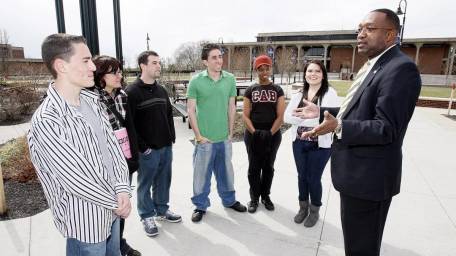Shaun McKay used integrated planning to take Suffolk County Community College from accreditation warning status to commendations. Here's how the same practices help in a pandemic.
MANORVILLE, NY / ACCESSWIRE / December 3, 2020 / When Dr. Shaun McKay took the helm at Suffolk County Community College, the institution was at risk of losing accreditation. The college was on warning status from the Middle States Commission on Higher Education and stagnant academically. Through the practiced development and implementation of an integrated planning model byShaun McKay, the school was revolutionized. After Shaun McKay assumed the presidency, the school was removed from warning status, received reaffirmed accreditation, and eventually transitioned to receiving multiple commendations at a subsequent re accreditation site visit.

Shaun McKay believes in the value of integrated planning. He sees merit in its application for various higher education adjacent problems, including the pressing concerns of the current pandemic. According to Dr. Shaun McKay, an integrated planning model relies on assessing and evaluating successful strategic and operational planning, followed by strategic resource allocation.The global pandemic requires coordination and most specifically a national plan that includes educational institutions as we train the workers that are at the forefront battling this pandemic.
Despite its root in institutional data, the model can easily incorporate additional components to maximize the effectiveness of a single institution or multiple institutions working together with governmental institutions to tackle the issues of the day while addressing the needs of every state. During his time at Suffolk County Community College, Shuan McKay used the model across institutions to garner a 44% increase in dual-enrollment through high school partnerships.
Mid-pandemic, the issues are different and can include addressing food insecurity, displacement of students, and vaccine distribution. According to Dr. Shaun McKay, there is a clear pathway for educational facilities and multiple government agencies to administer this vaccine and other approaches that scientists and the CDC outlined.
Making vaccine distribution and delivery a part of the integrated planning model for institutions needs to be focused on problems impacting high-risk populations. Colleges are also uniquely poised to help administer the vaccine to students and their families, a move with the potential to limit a spread in the community. Nursing and other allied programs are already at colleges and universities, Our Students are interning at major hospitals that are short staffed or overworked. A federal program is needed to assist here and it should include an incentive for frontline workers with the loan forgiveness programs.
Dr. Shaun McKay's years in higher education helped reaffirm the value of setting measurable objectives and key performance indicators. An integrated approach that includes all agencies with specific targeted goals that are scientifically driven as well as an educational campaign with do well moving forward.
These hallmarks of integrated planning easily flex and extend to accommodate the COVID-19 pandemic and other quality-of-life objectives, such as eliminating hunger for students or providing access to housing assistance services on campus.
Another key component of helping this country to move forward in multiple arenas is addressing National security in a global way to benefit the good of all partner states, food insecurity; Healthcare; Unemployment; workforce training; student loans, housing and specifically to address the disarray in minority communities that are not organized and voices go unheard because of saturation and lack of representation politically. We have an obligation to serve all communities and this can only be done through advocacy and hopefully legislatively while representation in all areas where decisions are being made can be in a transparent way and not decided by the courts.
About Dr. Shaun McKay
Shaun McKay served as president of Suffolk County Community College, the largest community college in New York state, from 2010 to 2019. He also served the same institution as Executive Dean, CEO of the college's Grant Campus, and as the Director of Planning for the Community College of Baltimore County. He holds an Ed.D. in higher education administration with a specialization in Community College Leadership from Morgan State University in Baltimore.
CONTACT:
Caroline Hunter
Web Presence, LLC
+1 786-551-949
SOURCE: Dr. Shaun L. McKay



